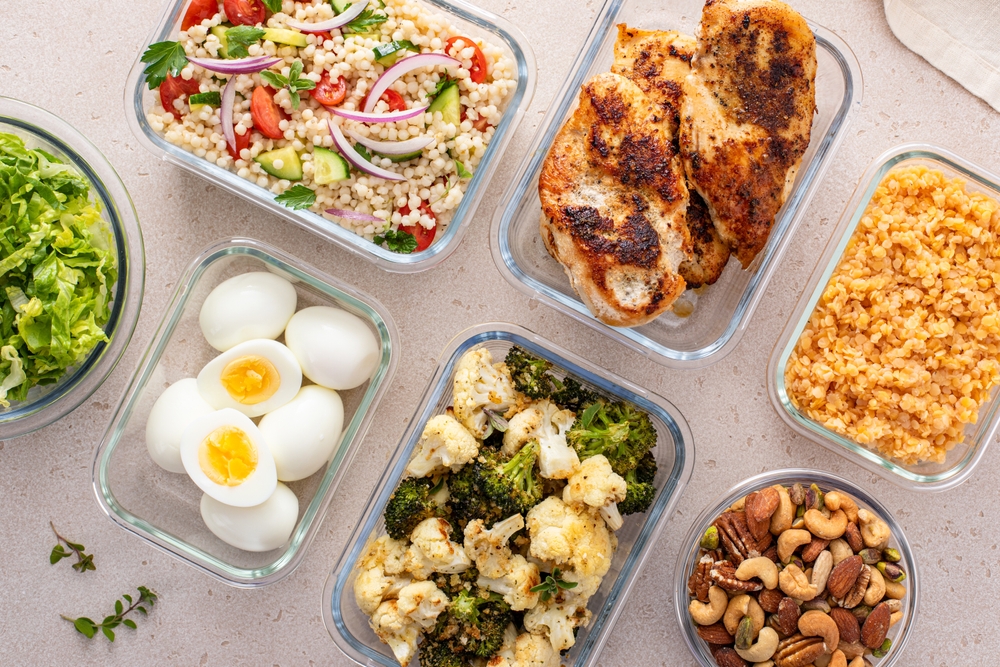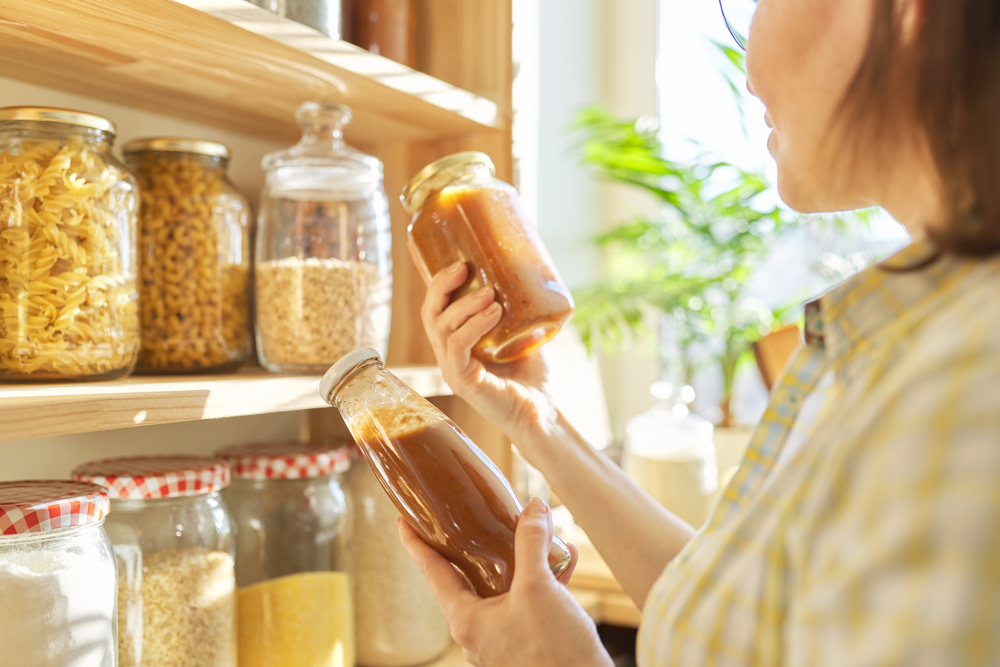Food waste happens to all of us, but with a few smart adjustments, it’s totally manageable. It’s not just about saving money—minimizing waste means making the most of what we already have. Every little step adds up, whether it’s meal planning, storing food better, or repurposing leftovers. Let’s explore a few easy-to-apply tricks that’ll help you get more out of your food and keep your trash can lighter.
Contents
- 1 Plan Your Meals
- 2 Make a Shopping List
- 3 Buy in Smaller Quantities
- 4 Store Food Properly
- 5 Use the First-In, First-Out Method
- 6 Get Creative With Leftovers
- 7 Freeze Excess Food
- 8 Make Broth from Scraps
- 9 Regrow Vegetables
- 10 Learn to Pickle and Preserve
- 11 Portion Control
- 12 Compost Food Scraps
- 13 Organize Your Fridge and Pantry
- 14 Use Overripe Fruits in Smoothies or Baking
- 15 Preserve Herbs in Ice Cubes
- 16 Donate Unused Non-Perishables
- 17 More From RetailShout
- 18 15 Creative Trader Joe’s Taco Night Ideas for the Whole Family
- 19 15 Old-School Casseroles That Still Hit the Spot
Plan Your Meals

Creating a meal plan before shopping is one of the simplest ways to reduce food waste. By knowing exactly what you need for each meal, you can avoid overbuying or buying unnecessary ingredients. Additionally, planning meals with similar ingredients helps ensure everything gets used. Not only does this reduce waste, but it also saves time throughout the week. Proper planning also helps you cook at home more often, reducing the likelihood of dining out. Several experts recommend incorporating “throw-together” meals to use up remaining ingredients.
Make a Shopping List

Always shop with a list based on your meal plan. This ensures you only buy what you need and reduces impulse purchases. Inventory your fridge and pantry before making the list to avoid buying duplicates of what you already have. Stick to the list while shopping to minimize excess items. Shopping without a plan often leads to unnecessary waste because unused food may spoil. Plus, you’ll save money by cutting down on those spur-of-the-moment buys.
Buy in Smaller Quantities

Bulk buying can be tempting, but if you’re not careful, large amounts of food can spoil before you use it. Purchase smaller quantities of fresh items, especially for perishable foods like fruits, vegetables, and dairy. For bulk purchases, consider freezing or properly storing what you don’t need right away. Buying smaller amounts allows for greater freshness, ensuring your food lasts longer and you reduce waste. This approach is particularly useful for smaller households.
Store Food Properly

Proper food storage is crucial to prolonging freshness. Make sure to store your vegetables, fruits, and other perishables correctly. Leafy greens, for example, stay fresher longer when wrapped in a damp towel and stored in the high-humidity drawer of the fridge. Dry pantry items like potatoes and onions need cool, dark spaces. By following storage recommendations, you can maximize the lifespan of your groceries.
Use the First-In, First-Out Method

Organizing your fridge and pantry with the “first-in, first-out” method ensures older items are used before newer ones. Place recently bought products behind older ones to avoid expired goods. Keeping an eye on what’s close to expiring helps reduce the likelihood of forgetting food. Additionally, this system encourages smarter shopping because you become more aware of how fast you use your ingredients.
Get Creative With Leftovers

Instead of throwing away leftovers, transform them into new meals. For example, roasted vegetables from dinner can be repurposed into a frittata or a stir-fry. Soups, casseroles, and salads are excellent ways to give a second life to leftover meats and vegetables. This approach not only reduces waste but also adds variety to your meals, making the most out of your ingredients.
Freeze Excess Food

Freezing food is a great way to preserve ingredients and reduce waste. Chop extra fruits, vegetables, or herbs and freeze them for future use. Items like bread, cheese, and even leftovers can be stored in the freezer to extend their shelf life. Be sure to label and date everything you freeze to keep track of how long it’s been stored.
Make Broth from Scraps

Save vegetable peelings, herb stems, and bones to make homemade broth. This not only reduces waste but also gives you a delicious and nutrient-rich base for soups, stews, or cooking grains. Many kitchen scraps, including onion skins, carrot tops, and celery ends, make excellent broth ingredients. Freeze the scraps until you’re ready to make broth.
Regrow Vegetables

Certain vegetables, like scallions and celery, can be regrown from scraps. Simply place the root ends in water and watch them regrow in a matter of days. This hack ensures you always have fresh produce on hand and reduces the frequency of buying new vegetables. Regrowing veggies is an easy way to reduce waste and is great for those with limited garden space.
Learn to Pickle and Preserve

Preserving extra produce through pickling or fermentation is a tasty way to reduce waste. Vegetables like cucumbers, onions, and peppers can be easily pickled and enjoyed for months. Alternatively, fruits can be turned into jams, while herbs can be dried or frozen for future use. Learning basic preservation techniques helps extend the life of your food and reduces waste.
Portion Control

Serving the right portions not only reduces overeating but also limits food waste. Start with smaller servings and go for seconds if needed. Leftovers are less likely to occur when you only cook and serve the necessary amount. This can be especially useful during family meals or gatherings where food is often prepared in large quantities.
Compost Food Scraps

Composting is one of the most eco-friendly ways to reduce food waste. Instead of throwing away fruit and vegetable scraps, you can turn them into nutrient-rich compost for your garden. Items such as coffee grounds, eggshells, and vegetable peels decompose and enrich the soil. This process reduces the volume of waste sent to landfills and helps reduce methane emissions. Composting is also an easy way to create natural fertilizer that benefits plants and reduces the need for chemical alternatives.
Organize Your Fridge and Pantry

A well-organized kitchen can significantly reduce food waste. By keeping your fridge and pantry tidy, you can easily see what ingredients you have and use them before they spoil. Labeling food items with their purchase or expiration dates can help you prioritize what to use first. Additionally, grouping similar items together can prevent duplicate purchases and ensure nothing is forgotten. This simple step can lead to substantial reductions in food waste at home.
Use Overripe Fruits in Smoothies or Baking

When fruits like bananas, berries, or apples get overripe, they often get tossed. Instead of throwing them away, you can use overripe fruits in smoothies or baking. Bananas, for instance, are perfect for banana bread or muffins, while berries add a natural sweetness to smoothies. Overripe fruits can also be frozen for future use, adding convenience and reducing waste. This is an easy way to salvage fruits that may not look perfect but are still packed with flavor.
Preserve Herbs in Ice Cubes

If you find yourself with an excess of fresh herbs that you can’t use up in time, freeze them in ice cubes. Simply chop the herbs and place them in an ice cube tray, then cover them with water or olive oil before freezing. This preserves the herbs’ flavor and prevents them from spoiling. The frozen cubes can be used in future soups, stews, or sauces, providing a fresh herb taste without waste. It’s an easy way to extend the shelf life of delicate herbs like basil, parsley, and cilantro.
Donate Unused Non-Perishables

Instead of letting non-perishable items sit in your pantry until they expire, consider donating them to local food banks or shelters. Many of these organizations rely on donations to feed families in need. Items like canned goods, pasta, and rice are often in high demand and have a long shelf life, making them perfect for donation. This not only helps reduce food waste but also supports communities in need. Make a habit of regularly checking your pantry for items you won’t use and donating them before they go to waste.
This article originally appeared on RetailShout.
More From RetailShout
16 Midwest Food Chains That Locals Can’t Get Enough Of

When it comes to food, Midwesterners know what they love, and they love it a lot! The Midwest is home to some seriously awesome food chains that locals swear by. From comfort food classics to quirky fast-casual spots, these places serve up flavors that make you feel right at home. Read More
15 Creative Trader Joe’s Taco Night Ideas for the Whole Family

Taco night doesn’t have to be the same old routine. Trader Joe’s is packed with fun ingredients that can transform your tacos into something exciting and new. The best part? These ideas are quick and easy to put together, making weeknight dinners stress-free. Read More.
15 Old-School Casseroles That Still Hit the Spot

There’s something comforting about old-school casseroles that keeps them around through the years. Whether you’re craving a hearty dish or looking for a crowd-pleasing dinner idea, these classic casseroles hit the spot every time. Packed with simple ingredients and rich flavors, they’re easy to whip up and bring a sense of nostalgia to the dinner table. Read More.






